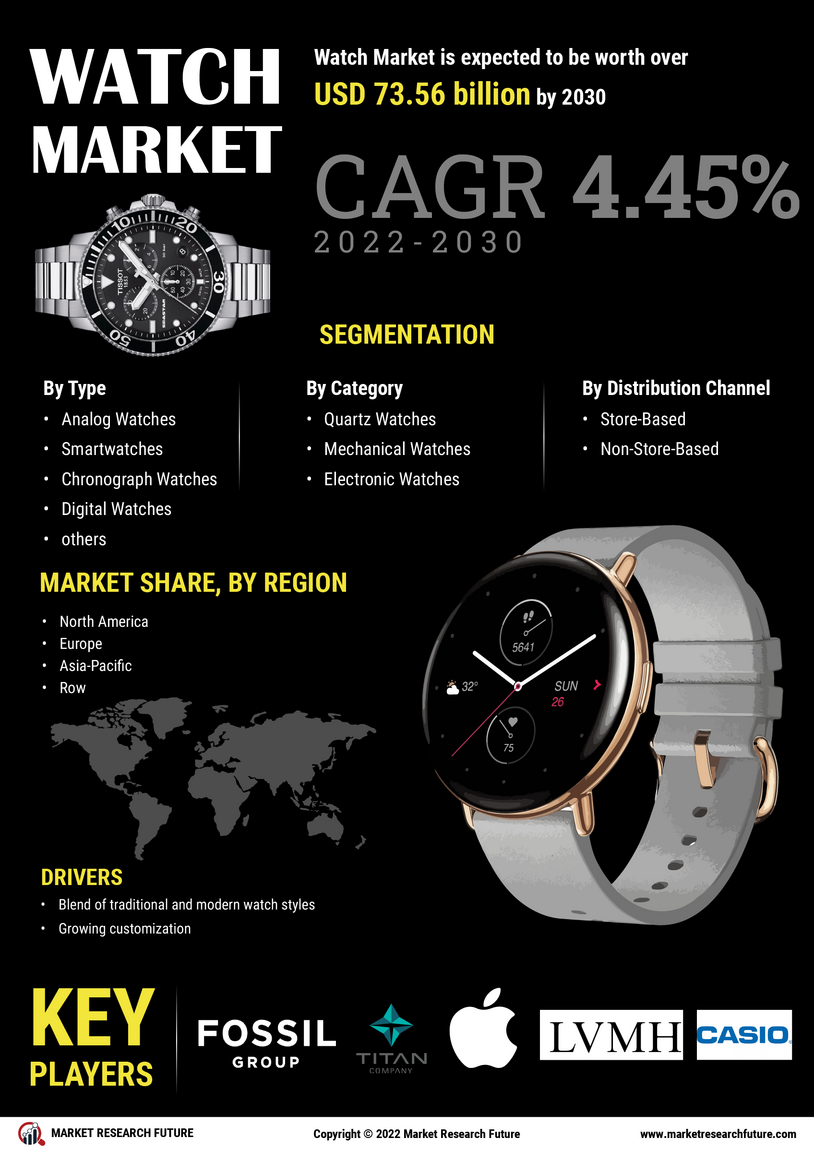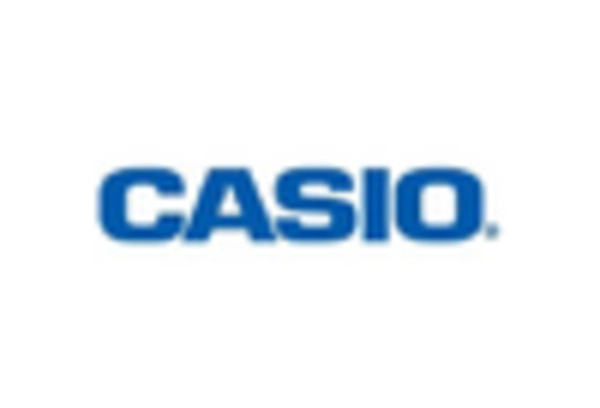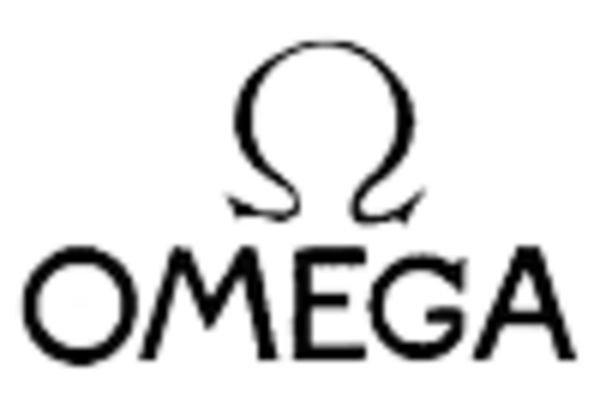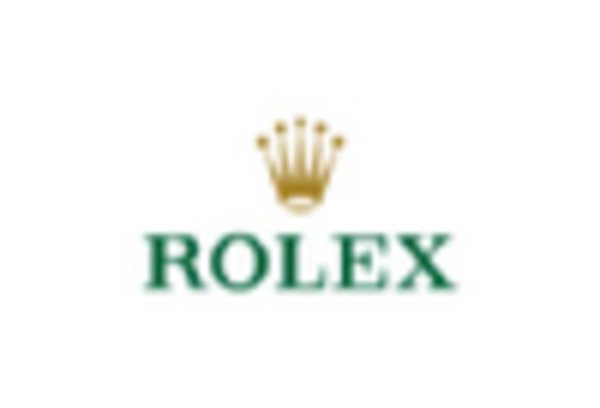Evolving Consumer Preferences
Consumer preferences are rapidly evolving within the Watch Market, influenced by lifestyle changes and cultural shifts. There is a growing inclination towards unique and personalized timepieces, as consumers seek to express individuality through their accessories. This trend is evident in the rising popularity of customizable watches, where consumers can select materials, colors, and features that reflect their personal style. Additionally, the demand for multifunctional watches that cater to active lifestyles is on the rise. As a result, brands are diversifying their offerings to include sport and adventure-oriented models, which appeal to a broader demographic. This evolution in consumer preferences is likely to shape the future landscape of the Watch Market.
Rising Demand for Luxury Watches
The Watch Market is currently experiencing a notable increase in demand for luxury timepieces. This trend is driven by a growing affluent consumer base that values craftsmanship, exclusivity, and status. In recent years, the luxury watch segment has shown resilience, with sales projected to reach approximately 50 billion dollars by 2025. This growth is attributed to the increasing disposable income of consumers, particularly in emerging markets. Furthermore, the allure of luxury watches as investment pieces has gained traction, as they often appreciate in value over time. The Watch Market is thus witnessing a shift where consumers are not merely purchasing watches for utility but as symbols of prestige and wealth.
Expansion of E-commerce Platforms
The Watch Market is witnessing a significant shift towards e-commerce, driven by changing shopping behaviors and technological advancements. Online retail platforms are becoming increasingly popular, providing consumers with convenient access to a wide range of watch brands and styles. This trend is supported by data indicating that online sales in the watch sector are expected to account for over 30% of total sales by 2025. The rise of social media and influencer marketing has further propelled this shift, as consumers are more inclined to purchase watches they discover online. Consequently, traditional brick-and-mortar retailers are adapting by enhancing their online presence, thereby transforming the Watch Market into a more digitally-driven landscape.
Increased Focus on Sustainability
Sustainability has become a pivotal concern within the Watch Market, as consumers increasingly prioritize eco-friendly practices. Brands are responding by adopting sustainable materials and ethical sourcing methods, which resonate with environmentally conscious consumers. The market is witnessing a rise in the use of recycled metals and conflict-free gemstones, reflecting a commitment to reducing environmental impact. Reports indicate that nearly 70% of consumers are willing to pay more for sustainable products, which is influencing purchasing decisions in the watch sector. This shift towards sustainability not only enhances brand reputation but also aligns with the values of a new generation of consumers, thereby driving growth in the Watch Market.
Technological Advancements in Watch Manufacturing
Technological innovations are reshaping the Watch Market, enhancing both the functionality and aesthetic appeal of timepieces. Advanced manufacturing techniques, such as 3D printing and precision engineering, allow for the creation of intricate designs that were previously unattainable. Additionally, the integration of smart technology into traditional watchmaking has led to the emergence of hybrid models that combine classic aesthetics with modern features. The market for smartwatches is projected to grow significantly, with estimates suggesting a compound annual growth rate of over 20% in the coming years. This convergence of technology and traditional watchmaking is likely to attract a broader audience, thereby expanding the Watch Market.


















Leave a Comment